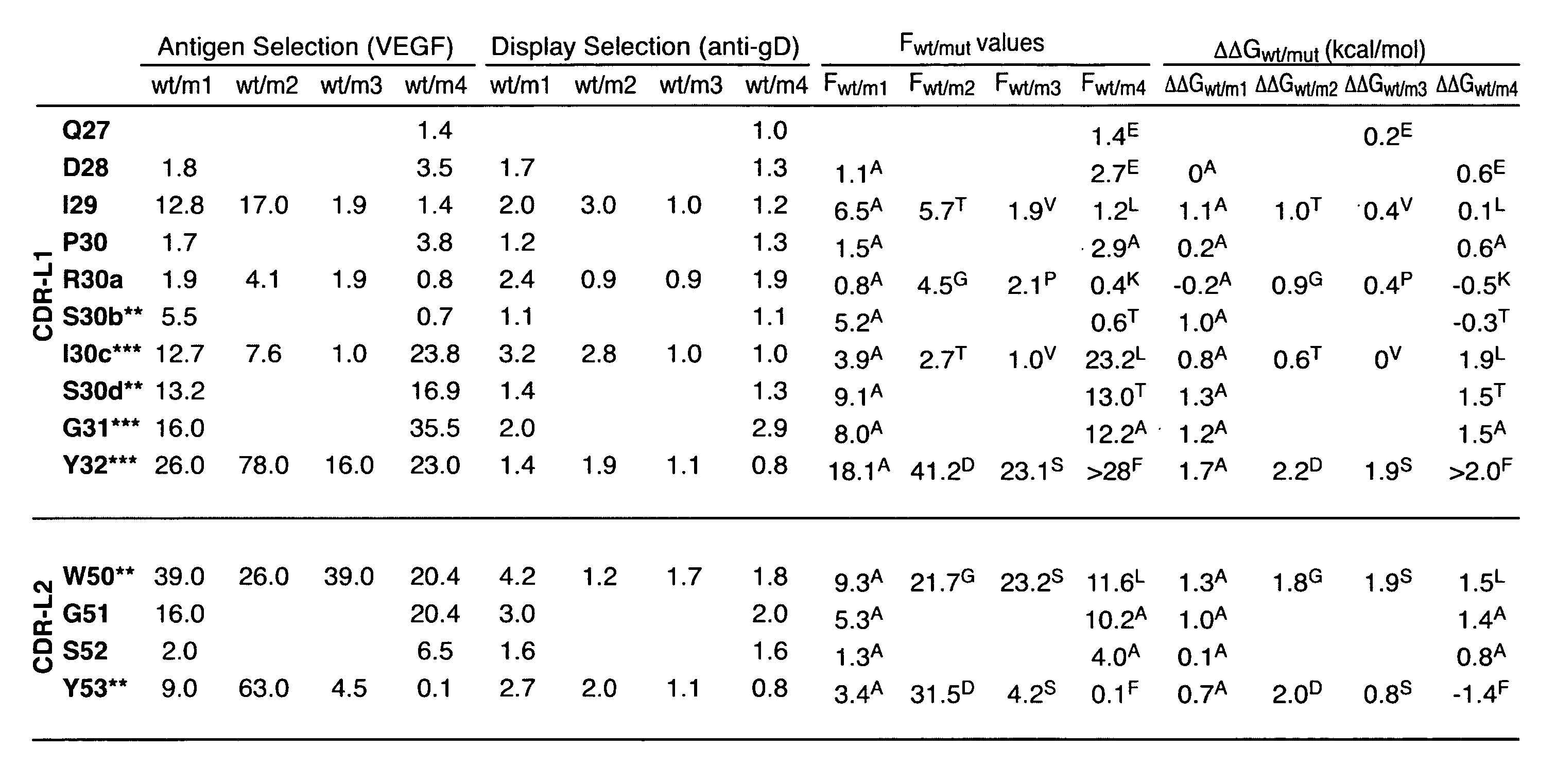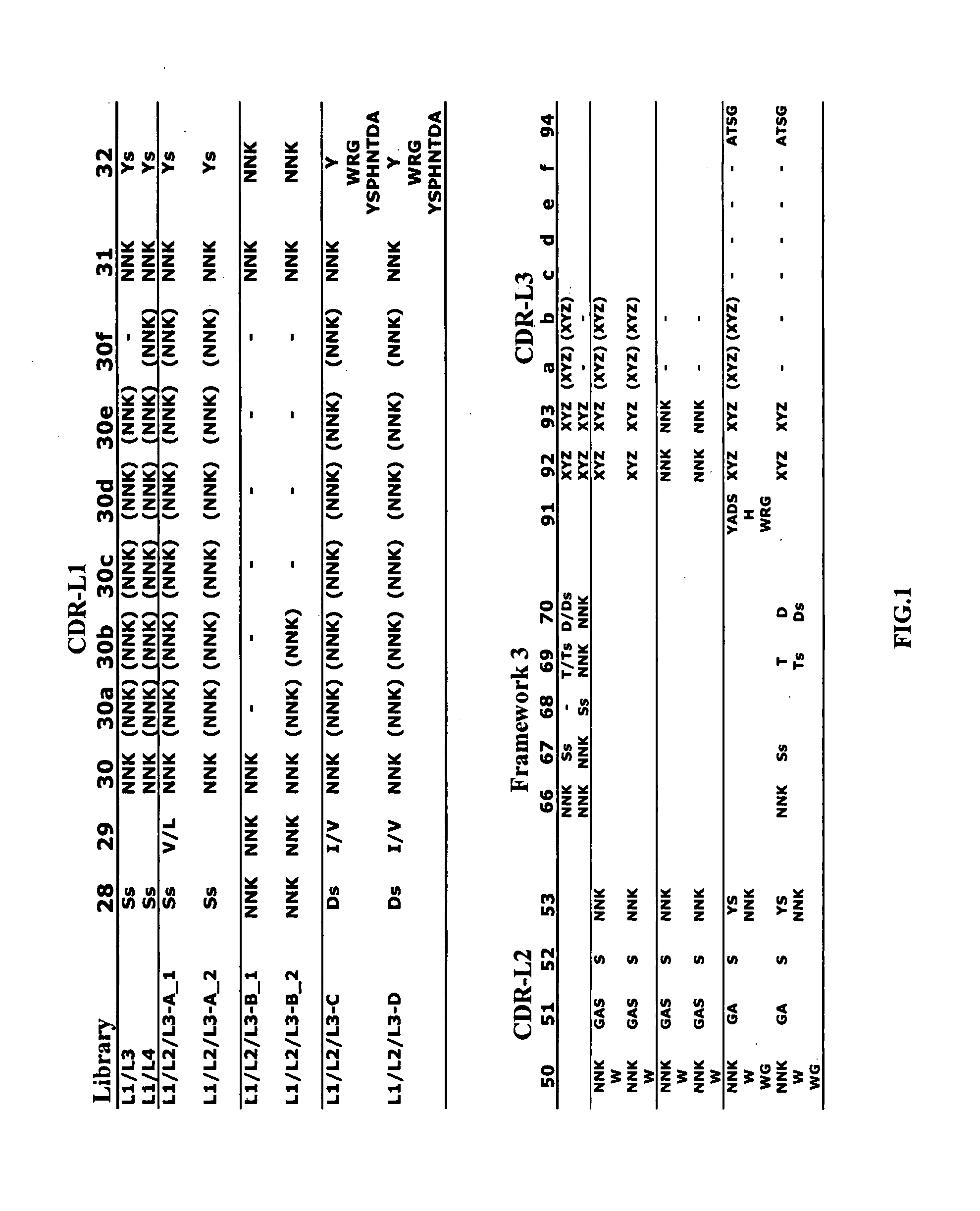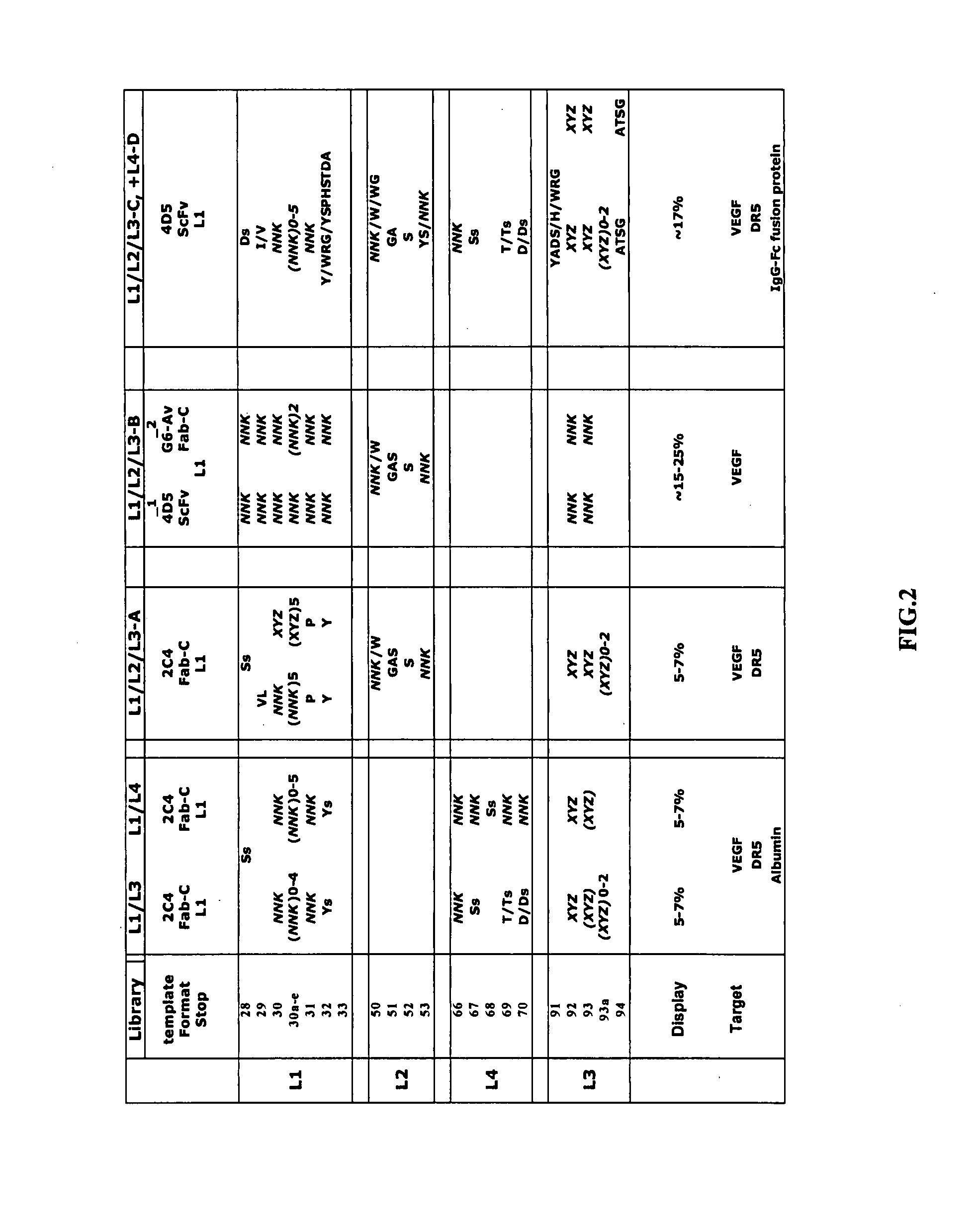Multispecific antibodies
a multi-specific antibody and antibody technology, applied in the field of multi-specific antibodies, can solve the problems of asymmetry of diversity in the two chains, and achieve the effect of improving the binding affinity of multi-specific antibodies
- Summary
- Abstract
- Description
- Claims
- Application Information
AI Technical Summary
Benefits of technology
Problems solved by technology
Method used
Image
Examples
example 1
Library Design and Construction
[0131] The antigen-binding site of antibody is formed by the association of the variable domain (VH, VL) of heavy chain (HC) and light chain (LC), each containing three CDR loops for antigen recognition. In many cases one of the two variable domains, often VH, determines the antigen specificity. Mice with transgenic HC but intact LC repertoire generate neutralizing antibody titers (Senn et al., Eur. J. Immunol. 33:950-961, 2003). We set out to investigate how bi-specificity of an antibody can occur and whether different utilization of the VH and the VL domains can enable dual antigen binding specificity.
[0132] A semi-empirical approach was taken to find a design for diversifying the amino acid composition and CDR length of antibody light chain and a library template that enabled generation of a functional phage-displayed antibody library from which antibodies binding specifically to a protein antigen could be selected. The sequence and length diversi...
example 2
Evaluation of Library Performance
Library Sorting and Screening
[0148] A library was considered functional when antibodies binding specifically to various protein antigens could be isolated after 4-5 rounds of sorting. Many protein targets were known to allow functional immobilization for library panning and specific antibodies have been generated from validated phage-displayed libraries (Fellouse et al., 2005) (Lee et al., 2004a). To evaluate each set of libraries, we chose a subset of these targets for selection (FIG. 2). The libraries were subjected to an initial round of binding selection with anti-gD antibody or protein L as the capture target to eliminate clones in which the Fab / scFv gene had been deleted, followed by 4-5 rounds of antigen selection. Alternatively, they were directly subjected to target binding selection without pre-selection with anti-gD or protein L. NUNC 96-well Maxisorp plates were coated overnight with antigen (5 μg / ml) and blocked for 1 hour with altern...
example 3
Characterization of Antibodies from the Light Chain Library
Conversion of scFvs to Fabs
[0155] To test whether conversion of the scFvs′2 as displayed on phage to Fabs affected the affinity of the binding clones from the library, 2 clones (3-7 anti-hVEGF and 4-1 anti-hDR5) were chosen for conversion to Fab and displayed on phage. The VL region of Phagemid DNA for selected hVEGF and DR5 scFv fragments was digested with restriction enzymes, which cleaved the DNA upstream of the region encoding for CDR-L1 (EcoRV) and downstream of the region encoding for CDR-L3 (KpnI). The digested DNA fragment was ligated into a similarly digested vector (pAP2009) designed for the phage display of Fab hu4D5 by fusion to the C-terminal domain of the M13 gene-3 minor coat protein (Lee et al., 2004b). The resulting bi-cistronic phagemid contains the light chain fused to an epitope (gD) tag at the C-terminus and heavy chain (VH and CH1) fused to the gene for M13 minor coat protein (p3) C-terminally under ...
PUM
| Property | Measurement | Unit |
|---|---|---|
| Molar density | aaaaa | aaaaa |
| Molar density | aaaaa | aaaaa |
| Molar density | aaaaa | aaaaa |
Abstract
Description
Claims
Application Information
 Login to View More
Login to View More - R&D
- Intellectual Property
- Life Sciences
- Materials
- Tech Scout
- Unparalleled Data Quality
- Higher Quality Content
- 60% Fewer Hallucinations
Browse by: Latest US Patents, China's latest patents, Technical Efficacy Thesaurus, Application Domain, Technology Topic, Popular Technical Reports.
© 2025 PatSnap. All rights reserved.Legal|Privacy policy|Modern Slavery Act Transparency Statement|Sitemap|About US| Contact US: help@patsnap.com



